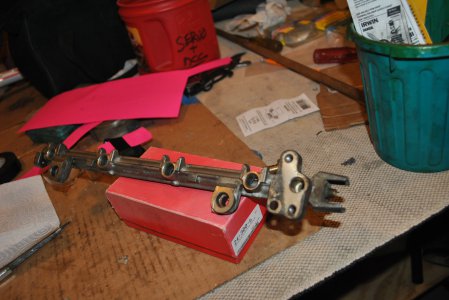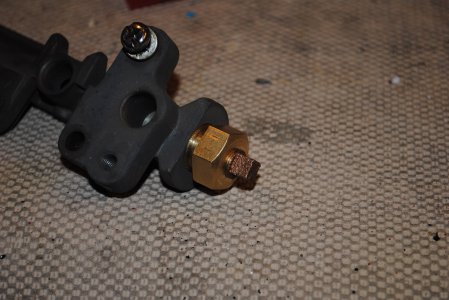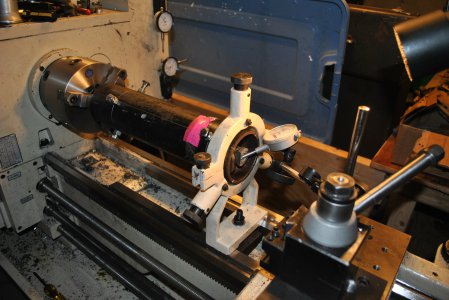Too many replies now for me to answer each post individually but thank you all for taking the time to think and reply, each has been appreciated a lot and I mean that !
Randy,
While I have a substantial amount of machining behind me I have never done any deliberate taper turning but isn't that what you will get with offsetting the tail stock, unless it was offset vertically, just thinking out loud here.
Just to clear up any misunderstandings I've sewn, the threads as well as the round spindle area are straight cut.
The several suggestions to bending was one of my first thoughts as well but it would take a at least (guessing) a 200 ton press to bend it which my shop is lacking by about 10 times over
It would also set up considerable areas of stress that is not wanted, I would think, likely that could be stressed relieved but that would be in the realm of a heat treat shop to answer.
Stuart, There are four mounting holes as shown in the picture but no other holes, these could be used to fixture.
Ken
Randy,
While I have a substantial amount of machining behind me I have never done any deliberate taper turning but isn't that what you will get with offsetting the tail stock, unless it was offset vertically, just thinking out loud here.
Just to clear up any misunderstandings I've sewn, the threads as well as the round spindle area are straight cut.
The several suggestions to bending was one of my first thoughts as well but it would take a at least (guessing) a 200 ton press to bend it which my shop is lacking by about 10 times over
It would also set up considerable areas of stress that is not wanted, I would think, likely that could be stressed relieved but that would be in the realm of a heat treat shop to answer.
Stuart, There are four mounting holes as shown in the picture but no other holes, these could be used to fixture.
Ken




